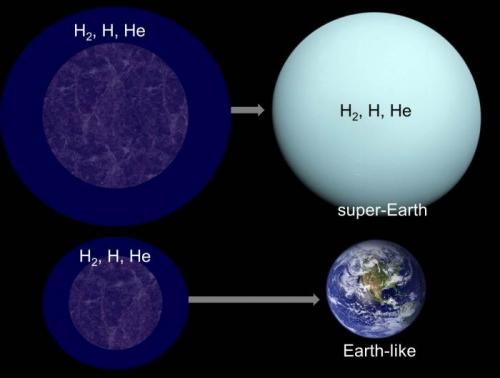Super-Earths might be Dead from Gas…
…rather surprising study of hydrogen-capture and loss from planets near Earth’s mass and orbit. Planets bigger than 0.1 Earth masses (i.e. Mars size and up) will capture the hydrogen-helium gas (H2/He) from the nebula that forms around young stars. The XUV (“soft x-rays”) light from young stars is enough to drive the primordial atmosphere away – but critical to future life on such planets, enough must escape to allow a secondary atmosphere, of heavier gases, to form. Below about 1.5 Earth masses, the planets can lose the primordial H2/He. Above that mass not enough is driven away to produce an “Earth-like” planet. Instead a “mini-Neptune” forms, with a deep H2/He atmosphere over a hot, rocky core.
But it’s not all bad news – small planets that were ejected from close to their stars by migrating gas giants, might retain sufficient H2/He to remain warm enough for liquid water, far from their original orbit. Such objects might be sprinkled through interstellar space, awaiting discovery.

